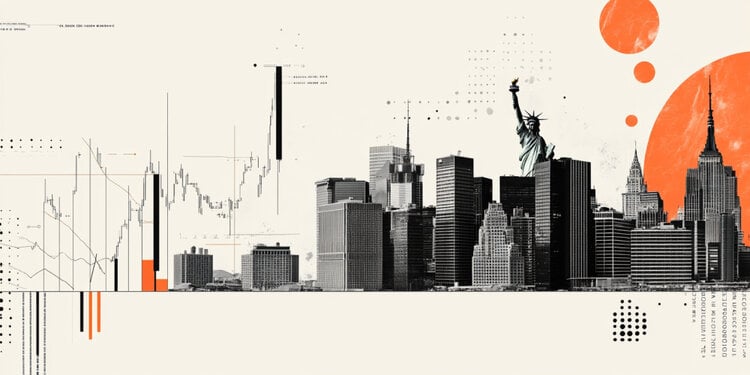- Sterling fails to maintain its gains inspired by upbeat S&P Global Services PMI data.
- The British economy is on the brink of a technical recession.
- BOE's Pill notes that policymakers are debating when the central bank might start cutting interest rates.
The British Pound (GBP) struggles to maintain the recovery move in the European session on Tuesday as the near-term outlook for risk-sensitive assets is bearish. Overall, the appeal of safe-haven assets is bullish, as investors believe that the Federal Reserve (Fed) is not rushing to cut interest rates. Declining recession risks in the United States, due to strong labor and retail demand, are leaving Fed policymakers plenty of time to decide on rate cuts.
GBP/USD fails to accelerate gains despite UK S&P Global/CIPS Services PMI improving in January. The economic data rose to 54.3, better than expectations of 53.8 and the previous reading of 53.4. The agency reported that the large influx of new orders, strong hiring in the last six months and increasing prospects of rate cuts by the Bank of England (BoE) led to a strong rebound in the services PMI.
Daily summary of market movements: The Pound remains in suspense while the Dollar bounces
- GBP struggles to hold on to the provisional support of 1.2500 discovered late in the Asian session on Tuesday, as the overall appeal remains bearish amid a cautious mood in the markets.
- The outlook for risk assets is bearish as hopes for aggressive rate cuts from the Federal Reserve have faded due to resilient US economic growth.
- According to CME's Fedwatch tool, investors are forecasting a 25 basis point (bp) rate cut in May, down from previous expectations in March.
- The US economy is performing well thanks to improved factory and IT order books, optimistic labor markets and strong consumer spending.
- Minneapolis Federal Reserve President Neel Kashkari stated Monday that lower risks to economic growth are giving the central bank more time to decide on rate cuts.
- Sterling also faces risks of a technical Recession that could force policymakers at the Bank of England toward a dovish stance on interest rates.
- It is worth mentioning that an economy is considered to be in a technical recession if it contracts for two quarters in a row.
- The UK economy contracted 0.1% in the third quarter of 2023, and the likelihood of a technical recession is high as it is expected to again underperform.
- A slightly dovish stance on interest rates from BoE Chief Economist Huw Pill has also dented sterling's appeal.
- BoE's Pill said on Monday that the stance from “if” it is appropriate to cut interest rates has changed to “when”
- In the latest monetary policy statement, BoE Governor Andrew Bailey said inflation was moving in the right direction and kept borrowing costs “under review”.
- Due to a light economic calendar, market participants will focus on BoE's Catherine Mann's speech, scheduled for Thursday. Mann was one of two of nine members of the Monetary Policy Committee (MPC) who voted in favor of a 25 basis point rate hike.
Technical Analysis: Sterling trading near seven-week lows
-638428034107595011.png)
The British pound retreats and approaches seven-week lows at 1.2520. Previously, the GBP/USD pair advanced to test the breakout of the descending triangle chart pattern formed on the daily time frame. The Pound is expected to face an intense sell-off after a soft test of the breakout region near 1.2600.
The 14-period Relative Strength Index (RSI) has fallen below 40.00 for the first time in three months. Further declines are possible due to the absence of divergence and oversold signals.
Inflation FAQ
What is Inflation?
Inflation measures the rise in prices of a representative basket of goods and services. General inflation is usually expressed as a month-on-month and year-on-year percentage change. Core inflation excludes more volatile items, such as food and fuel, which can fluctuate due to geopolitical and seasonal factors. Core inflation is the figure economists focus on and is the target level of central banks, which are mandated to keep inflation at a manageable level, typically around 2%.
What is the Consumer Price Index (CPI)?
The Consumer Price Index (CPI) measures the variation in prices of a basket of goods and services over a period of time. It is usually expressed as a percentage of inter-monthly and inter-annual variation. Core CPI is the target of central banks as it excludes food and fuel volatility. When the underlying CPI exceeds 2%, interest rates usually rise, and vice versa when it falls below 2%. Since higher interest rates are positive for a currency, higher inflation usually translates into a stronger currency. The opposite occurs when inflation falls.
What is the impact of inflation on currency exchange?
Although it may seem counterintuitive, high inflation in a country drives up the value of its currency and vice versa in the case of lower inflation. This is because the central bank will typically raise interest rates to combat higher inflation, attracting more global capital inflows from investors looking for a lucrative place to park their money.
How does inflation influence the price of Gold?
Gold was once the go-to asset for investors during times of high inflation because it preserved its value, and while investors often continue to purchase gold for its safe haven properties during times of extreme market turmoil, this is not the case. most of the time. This is because when inflation is high, central banks raise interest rates to combat it.
Higher interest rates are negative for Gold because they increase the opportunity cost of holding Gold versus an interest-bearing asset or placing money in a cash deposit account. On the contrary, lower inflation tends to be positive for Gold, as it reduces interest rates, making the shiny metal a more viable investment alternative.
Source: Fx Street
I am Joshua Winder, a senior-level journalist and editor at World Stock Market. I specialize in covering news related to the stock market and economic trends. With more than 8 years of experience in this field, I have become an expert in financial reporting.







